
The front line
The situation on the Bakhmut axis remains tense, with Russian forces now concentrating on capturing territories southwest of Bakhmut. Fighting continued for the center of the town of Opytne south of Bakhmut. The northern part of the city is completely under Ukrainian control, and everything south of Opytne is a “gray area” that is constantly changing hands.
A close-up of the approximate situation around Bakhmut is pictured below:
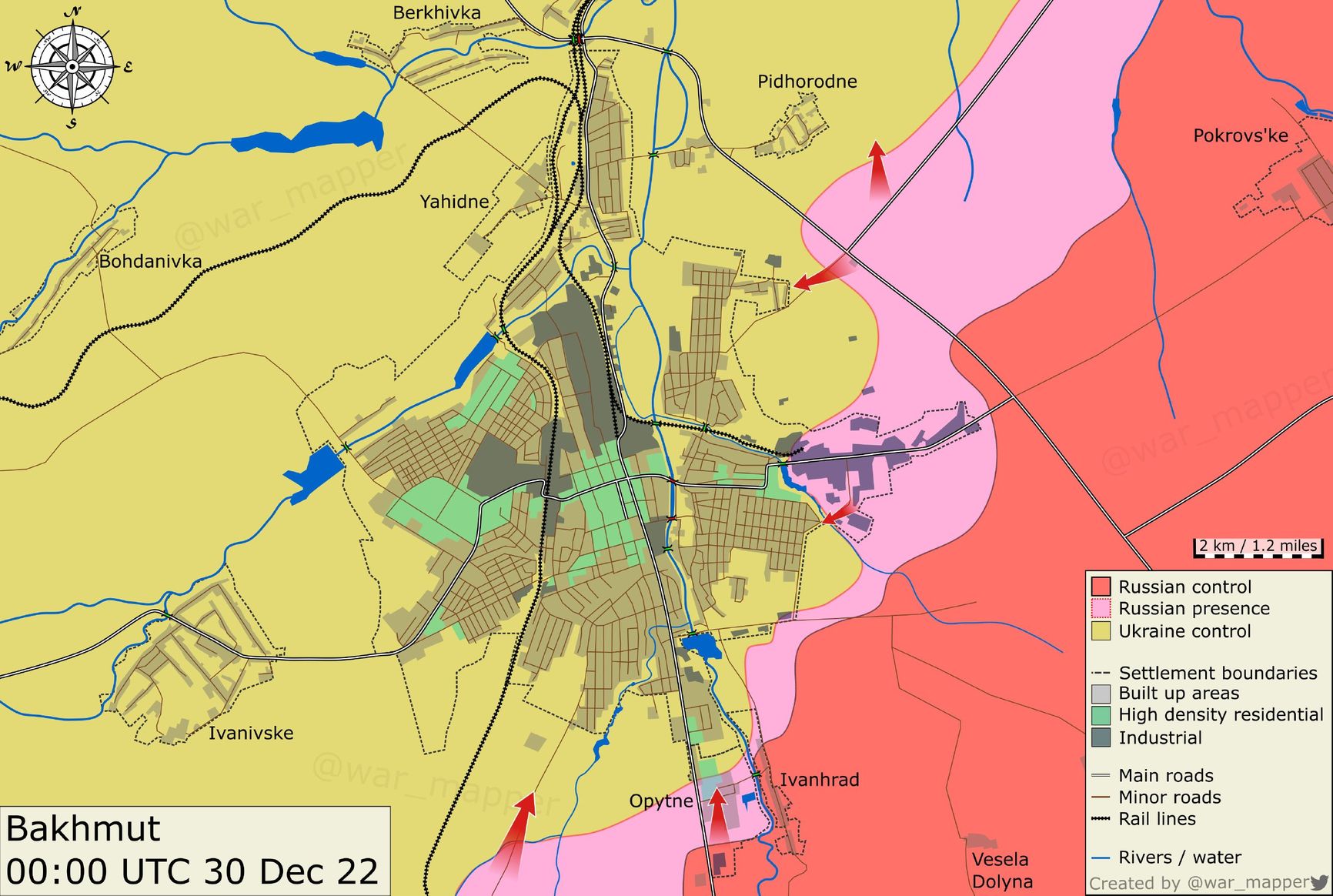
The Russian military crossed the railroad near Myika Pond and found themselves back in the villages of Andriivka and Kurdyumivka. However, this success appears to have cost them dearly: over the past 24 hours, 690 Russian military personnel have been killed and at least 1,800 wounded on all axes of contaxt, tweeted former US Navy Seal and war correspondent Chuck Pfarrer, illustrating the situation with the following map:
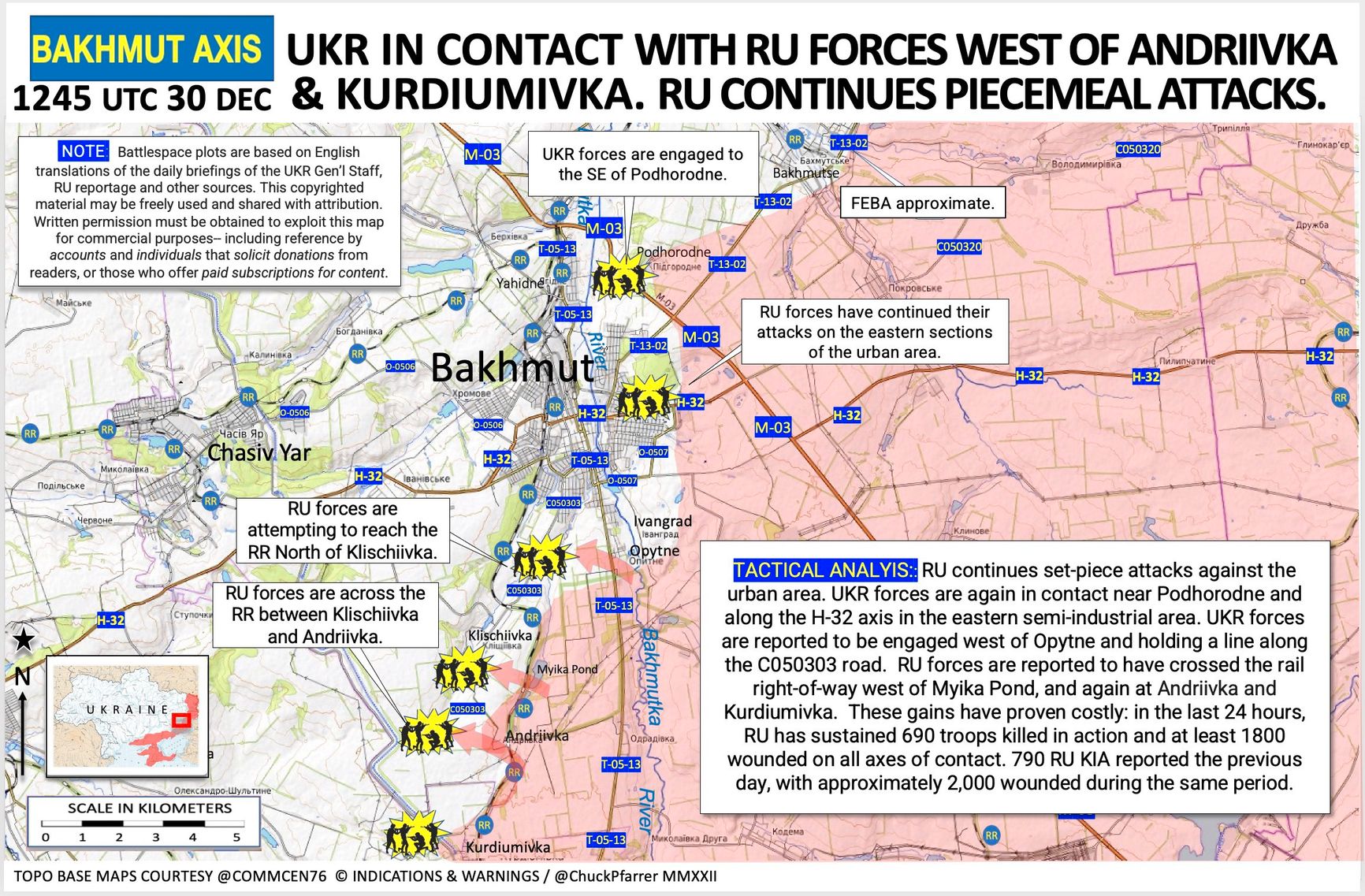
In the Kherson area, Russia continued to shell the city of Kherson and the right bank of the Dnipro river, while Ukrainian guerrillas and Special Forces conducted reconnaissance missions on the left bank. On December 30, explosions were heard near the R-47 (Henichesk – Novooleksiivka) and M-18 (Chonhar – Melitopol) highways in Henichesk, Pfaffer reported.
According to a report by the Armed Forces of Ukraine (AFU) General Staff, Russian troops continued their offensives in the Lyman direction and have attempted to improve the tactical situation in the vicinity of Kupiansk and Avdiivka. The situation is stable in the Volyn, Polessk, Siversk and Slobozhanske directions.
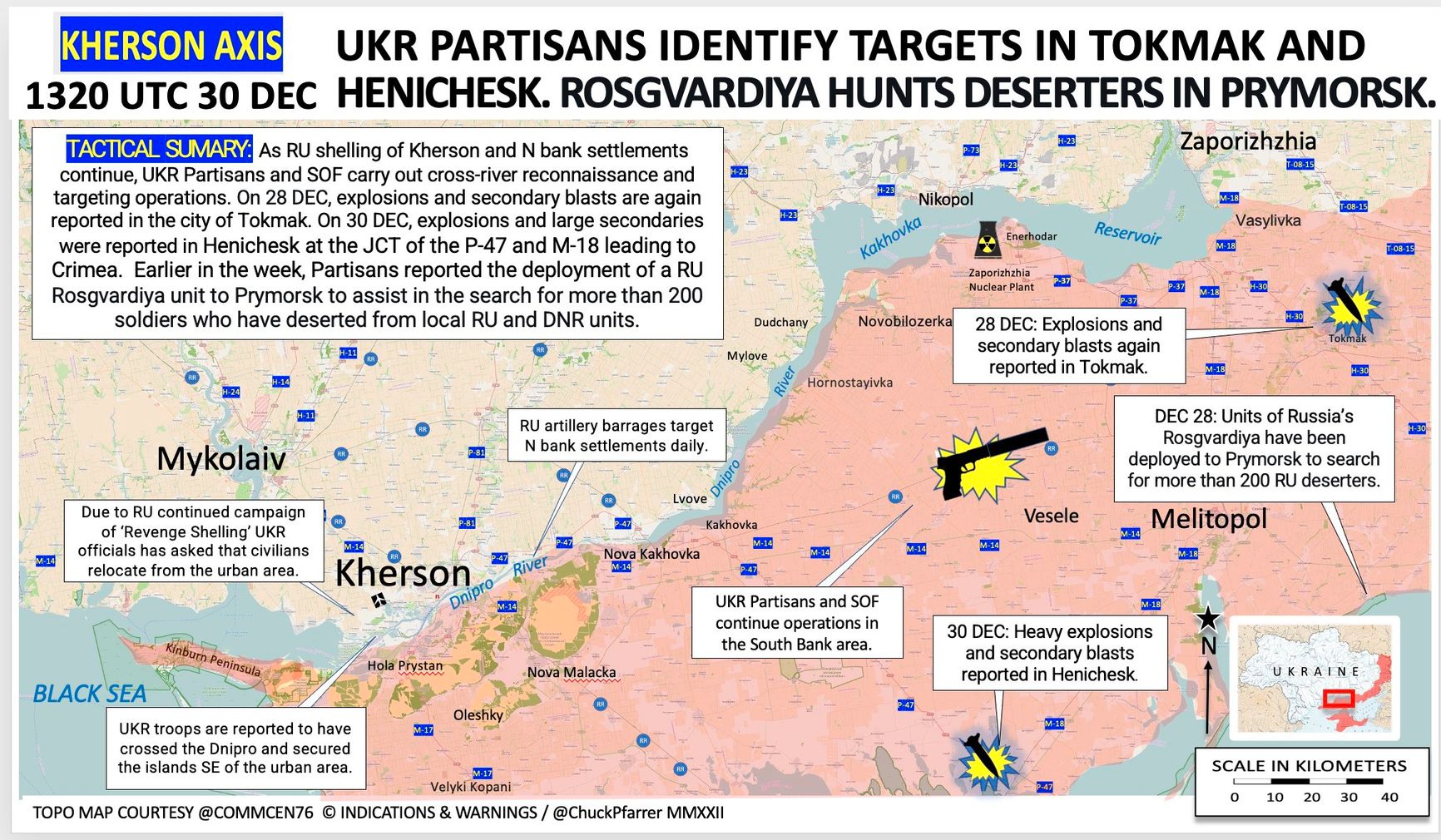
Overall, over the past 24 hours, Ukrainian forces repelled assaults in the areas of Stelmakhivka, Bilohovka, Soledar, Ivanivske, Klyshchiivka, Kamianka, Avdiivka, Vesele, Vodyane, Krasnohorivka and Marinka. Twelve Russian armored fighting vehicles and six howitzers were destroyed. A Ukrainian HIMARS battery destroyed a Russian base in occupied Alchevsk last night, near the western border of Luhansk Region. Reports claimed that Ukrainian forces also hit and destroyed a Russian ammunition depot in Henichesk in the Kherson region. A Russian Mi-8 helicopter has also been downed on the eastern front line.
Russian shelling
The AFU Air Force reported that Russia fired 70 cruise missiles at Ukraine on December 29. Fifty-eight of them were shot down. Aside from the missiles, Ukrainian air defenses shot down 16 Shahed-131/136 drones overnight.
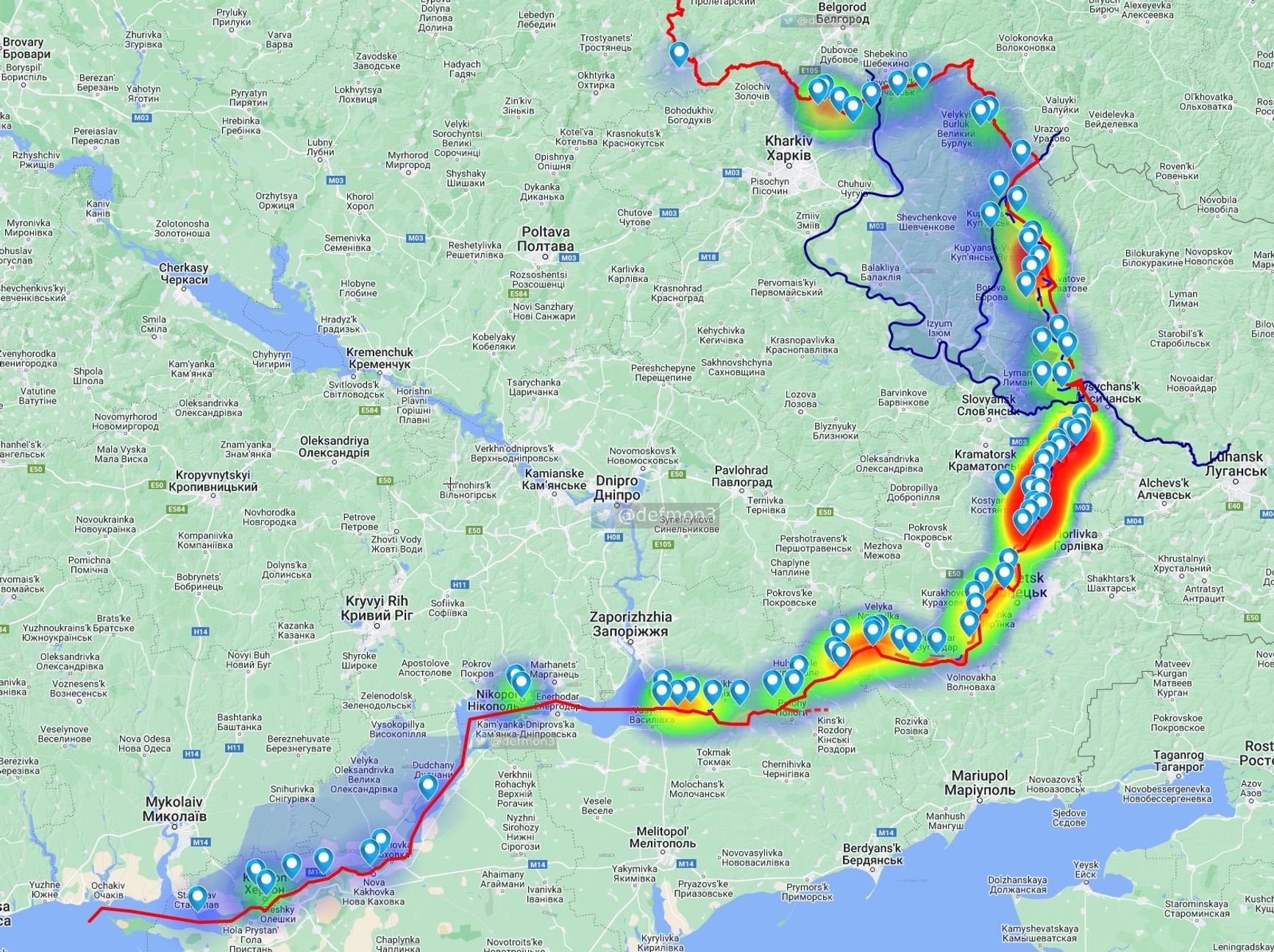
The International Atomic Energy Agency (IAEA) reported that as a result of Russia’s December 29 evening shelling, a backup power line supplying power to the Zaporizhzhia nuclear power plant (ZNPP) was damaged. The incident demonstrated the risk to the station's electricity supply, the IAEA said in a statement.
All six reactors at the ZNPP remain shut down, and the plant receives the electricity it needs for cooling and safety systems through the only 750-kilovolt line that remains intact. Before the war, there were four such lines. According to the IAEA, a backup line called Ferroalloy 1, with a capacity of 330 kilovolts, was disconnected Thursday. According to agency head Rafael Grossi, it was “the last working reserve line of the ZNPP, and it is extremely important to restore it as quickly as possible.”
An evening report from the AFU said that Russian forces carried out 16 air strikes during the day, 15 of which targeted civilian infrastructure. The Russian army also carried out 17 launches from MLRS systems. The shelling of populated areas resulted in civilian deaths.
Arms supplies
Ukrainian Foreign Minister Dmytro Kuleba is confident that Ukraine will officially receive US-made ATACMS ballistic missiles with a range of up to 300 km (160 miles) next year:
«Next year, yes. But it will also depend on the situation on the battlefield,» Kuleba said.
According to a report by Ukrainska Pravda, the UK has transferred demining equipment – 1,000 VALLON metal detectors and 100 bomb disposal kits – to Ukraine.
The US is also discussing the possibility of sending Ukraine M2 Bradley infantry fighting vehicles, reported Bloomberg. According to the publication, the vehicles may be included in one of the additional military assistance packages, but a final decision on the deliveries is yet to be made. The M2 Bradley is armed with a 25-mm automatic cannon and dual TOW-2 missile defense systems, has good armor protection and can carry up to seven paratroopers.
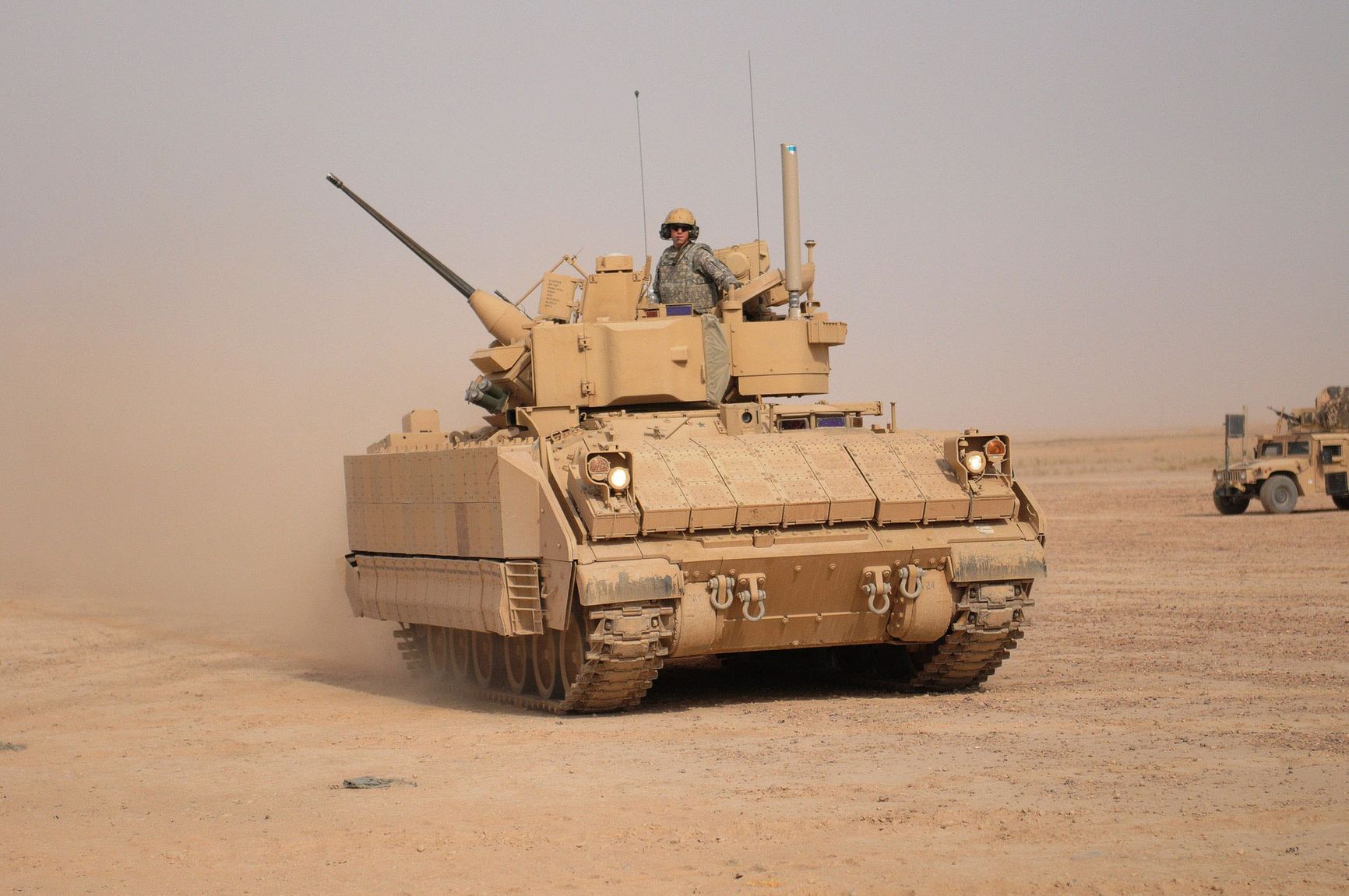
POW situation
There are 3,392 Ukrainian servicemen in Russian captivity, Olena Verbytska, Presidential Commissioner for the Protection of the Rights of Defenders of Ukraine, said in an interview with the German publication Redaktionsnetzwerk Deutschland. According to Verbytska, 15 thousand people in Ukraine have gone missing during the war. Many of them are civilians, and their fate is “completely unclear,” meaning they could have been kidnapped from occupied territories, taken prisoner by Russian forces, or killed, Verbytska stated.
At the end of June, the Russian Defense Ministry claimed that there were over 6,000 Ukrainian servicemen in captivity. The largest prisoner-of-war exchange between Russia and Ukraine took place on September 22, with 215 Ukrainian servicemen, more than 100 of them members of the Azov battalion, being released from Russian captivity. Ukraine, in turn, extradited Viktor Medvedchuk, a personal friend of Vladimir Putin, and released 55 Russians. According to The Washington Post, Russia’s Federal Security Service (FSB) attempted to dissuade Putin from going through with the exchange.
Russian MoD to create field prisons for soldiers who refuse to fight
Russia’s Defense Ministry has drafted a decree on the creation of field prisons. The decree would make it possible to punish the guilty by isolating them in special quarters and compounds, which would – in theory – be no worse than those in the rest of the military. The draft specifies that prisons may not be located in basements or cellars without windows or ventilation – however, this clause can be ignored in cases when it is “necessary to save servicemen’s lives.” The clause essentially legalizes holding “refuseniks” in basements, as a degree of danger is always present near the front lines. Many illegal camps for those who refuse to fight are now located in basements. The Russian authorities do not admit or recognize their existence.
Other news:
- Yevgeny Rybakov, deputy head of the control and investigation department of the military investigation directorate of Russia’s Investigative Committee, was killed in Donetsk during an artillery attack. The Investigative Committee has already initiated a criminal case into the circumstances of his death.
- The traffic jam in front of the Crimean bridge from the Krasnodar region has reached 5 km (3.1 miles), with passage taking several hours, said regional authorities. On December 30, reports claimed there were about 1,200 cars waiting to cross the bridge, with the length of the traffic jam reaching almost 3 km (1.8 miles). Drivers were advised to leave extra time to pass mandatory inspections or to use alternative routes when planning their trips.
- In the past 13 hours, six Russian military transport planes have landed at the Machulishchy airfield south of Minsk in Belarus, reported WarMonitor.